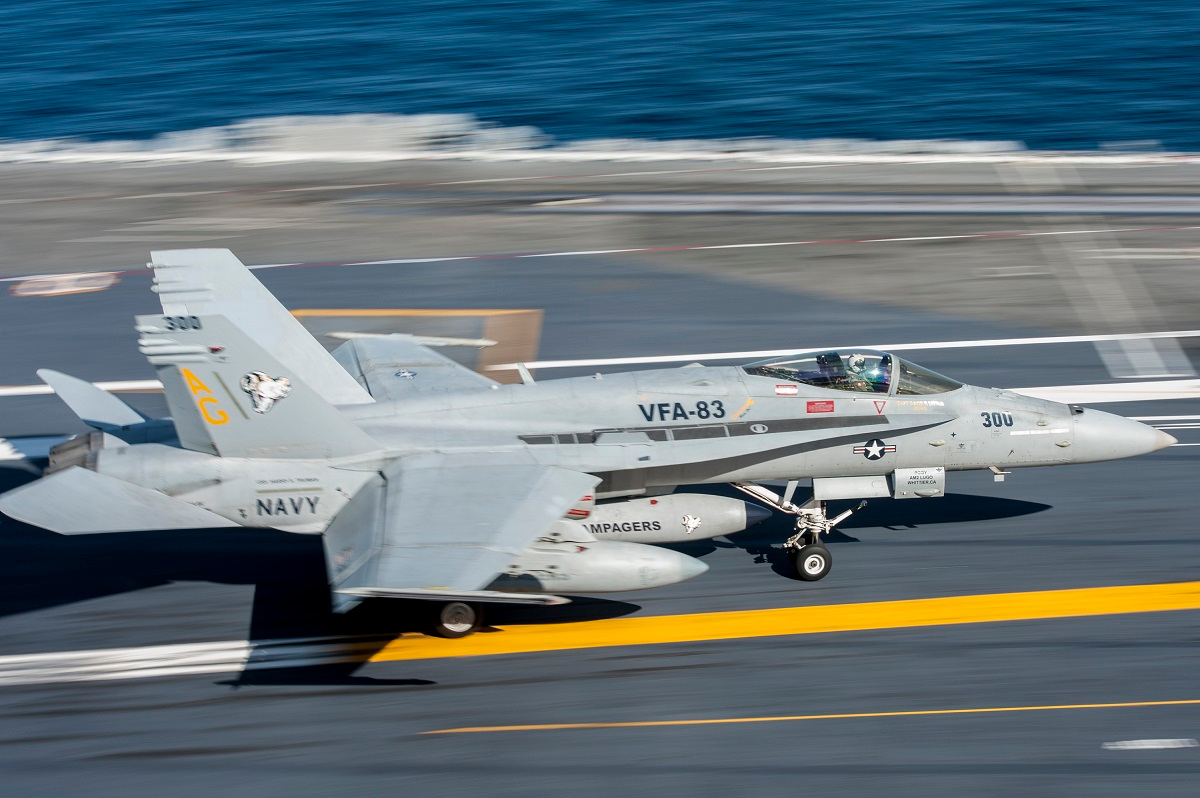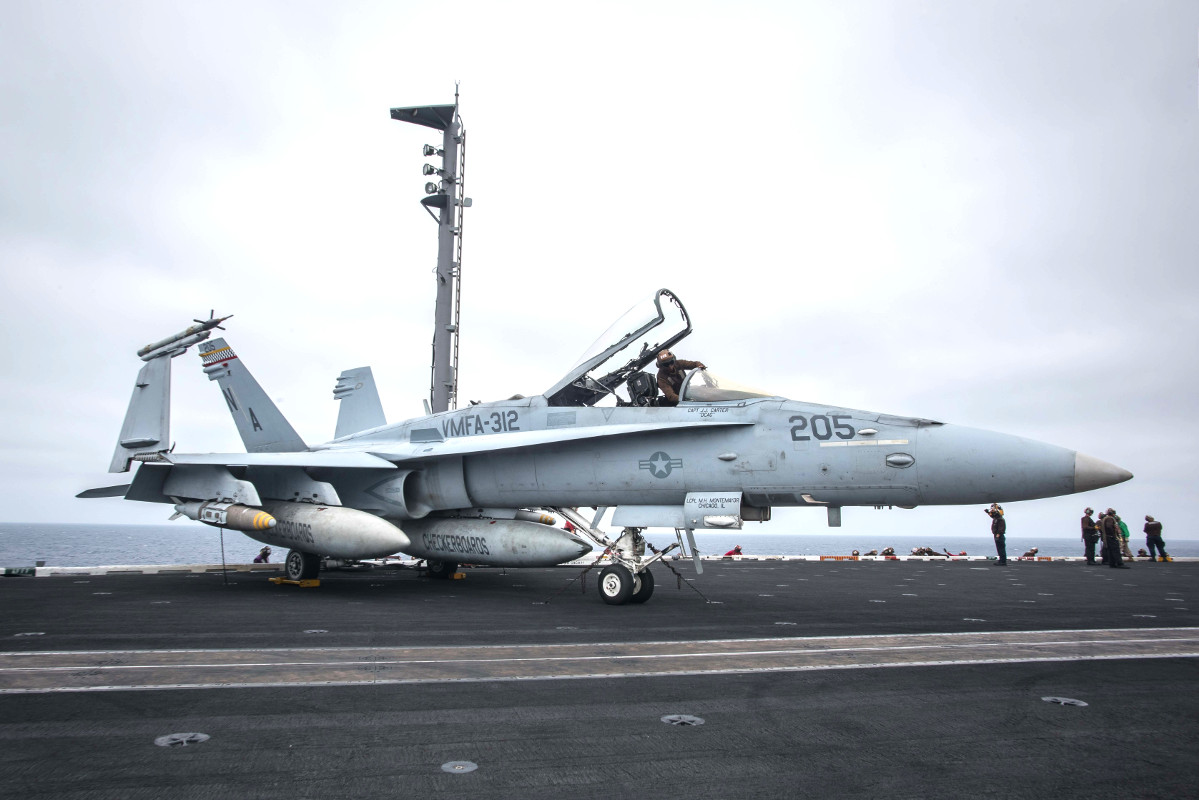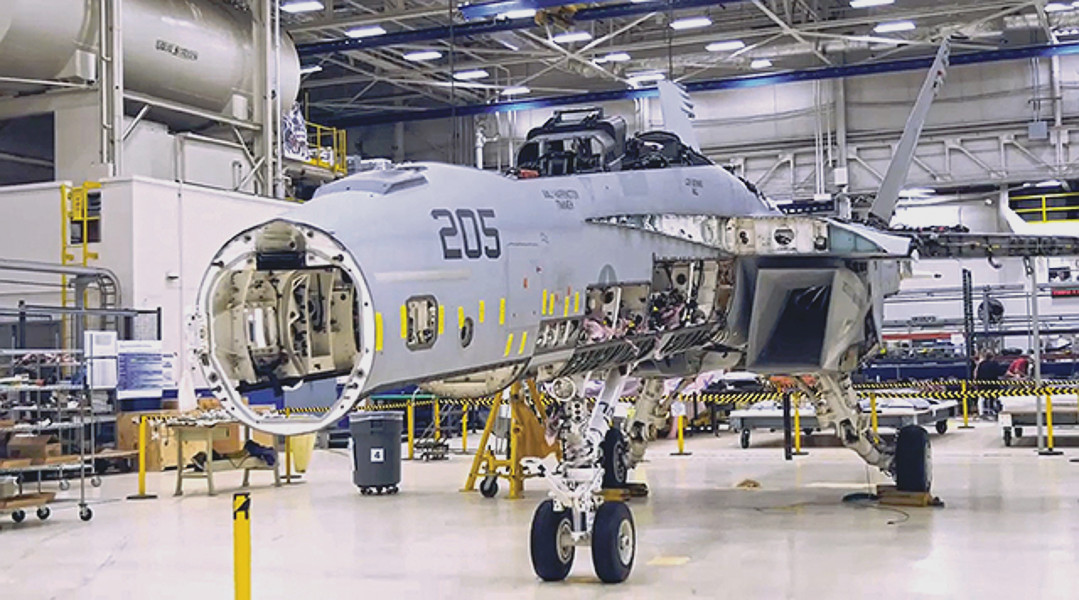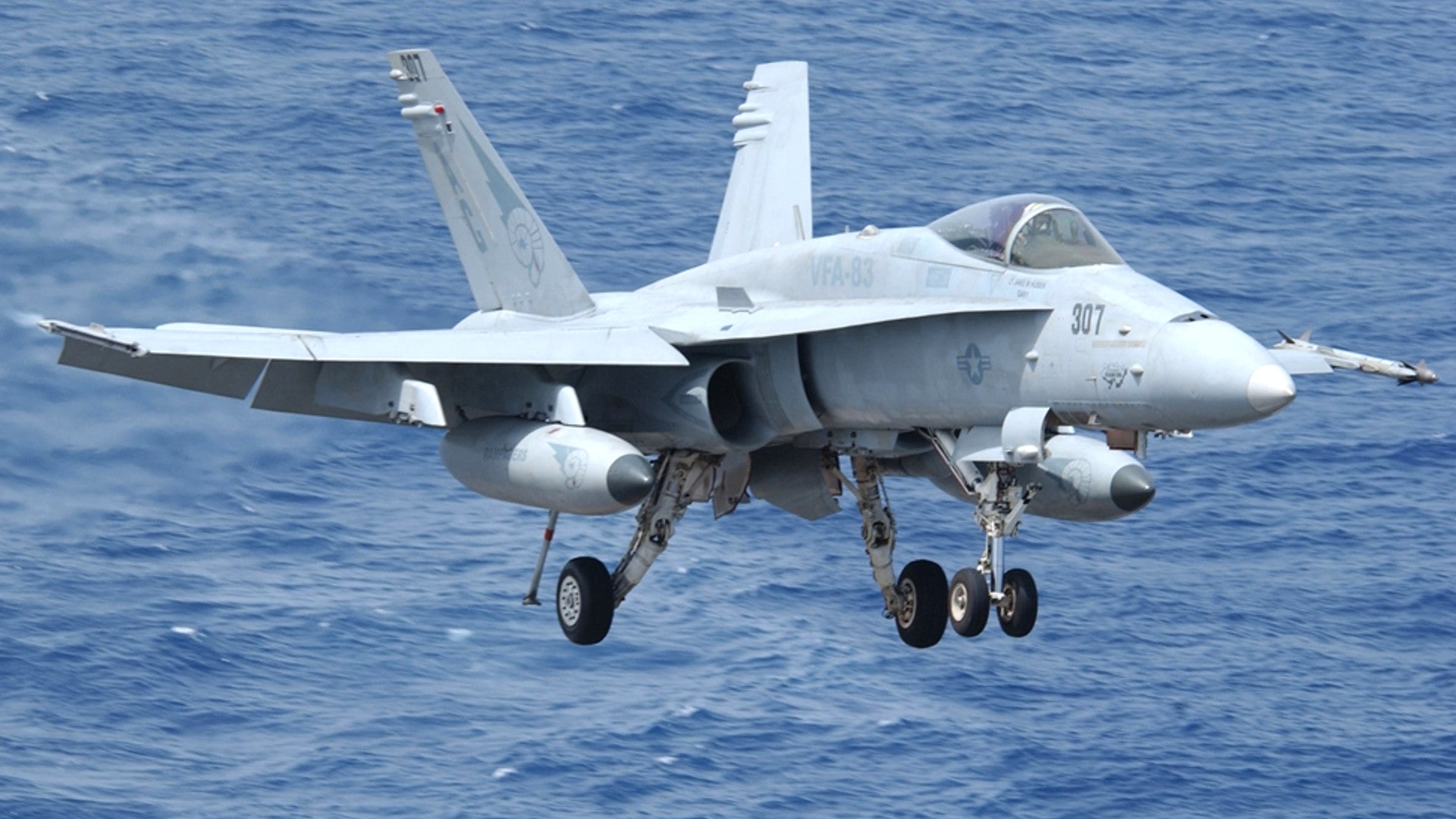The U.S. Navy has revealed that it will send 136 older F/A-18A-D Hornets to the boneyard to serve as parts donors for other jets, which it will eventually turn over to the Marine Corps. At the same time, the service is buying more F/A-18E/F Super Hornets and has hired Boeing to begin overhauling and upgrading existing Super Hornets to the new Block III configuration.
On March 6, 2018, Defense News reported that the Navy had approved plans to strike the F/A-18A-D Hornets from the rolls over a period spanning between the 2017 and 2020 fiscal years. Based on data from the service’s latest budget request for the 2019 fiscal year, which it released in February 2018, and our own analysis, the service had around 270 of these variants, also known collectively as Legacy Hornets, in inventory, as of Jan. 1, 2018. This includes including jets assigned to training, test, and reserve squadrons and the Blue Angels demonstration team.
Two separate reviews in 2017 “determined that 136 aircraft could be authorized for strike because their effective life was consumed and would require significant repair,” U.S. Navy Lieutenant Lauren Chatmas, a service spokesperson, told Defense News. “The decision was based upon readiness risk of existing F/A-18A-D inventory, long term operational costs versus gain in capability, and the potential to improve USMC [U.S. Marine Corps] readiness by transferring best of breed aircraft to the USMC.”
Under this plan, the Navy will then take parts from the retired aircraft to support the remaining planes until such time as it replaces them with newer F/A-18E/Fs. The service expects that four squadrons will get Super Hornets by the end of 2019, but it didn’t disclose which units were in line for the new aircraft.

Chatmas explained to Defense News that the service expects this process will save it almost $125 million in the 2019 fiscal year and more than $850 million across its five-year budget outlay. The costs to operate the Legacy Hornets, some of which first entered service in the 1980s, have steadily grown over the years, especially with those jets now long out of production.
The Navy’s plan will also hopefully help the Marines improve the abysmal availability rates of their own Legacy Hornets. The Navy will eventually send the Legacy Hornets with the most life left in them to the Marine Corps as it takes delivery of new Super Hornets.
Per the Marine Corps’ 2018 Aviation Plan, it has almost 180 F/A-18A-Ds spread out across active, reserve, and training squadrons. According to previous reports, there are another approximately 100 aircraft “out of reporting” and undergoing heavy maintenance.
But as of February 2017, more than half of the Marine Corps F/A-18A-Ds reportedly weren’t airworthy at all, let alone mission ready, on average. In 2016, the service had taken 30 Legacy Hornets that had been sitting in the main U.S. military aircraft boneyard at Davis-Monthan Air Force Base in Arizona and returned them to active service, a costly and time consuming process. That same year, it became so desperate it even raided a museum for other necessary components to keep its jets going.

This is something of a self-manufactured problem. At present, the Marines plan to transition straight from the F/A-18A-D to the F-35B Joint Strike Fighter, without purchasing Super Hornets in the interim.
Unfortunately, developmental trouble and other delays have slowed the process of getting the stealthy fighter jets into service. The Marines don’t expect to be able to retire their last Legacy Hornets until at least 2030, meaning it will have to find ways to keep those jets flying in the meantime.
The hand-me-downs could be a major boon to the Marines. Depending on whether or not the Navy has to complete strip the retired aircraft of useful components, those donor airframes could continue to support Marine Corps Hornets, as well. The deciding factor will be how fast the Navy can transition its own units and get the Legacy Hornets to Marine squadrons.
The Navy, on the other hand, does expect to operate a mixed fighter jet force of F/A-18E/Fs and its variant of the Joint Strike Fighter, the F-35C, for the foreseeable future, something that seems unlikely to change given its plans for the Legacy Hornets. The service actually wants to buy more Super Hornets – 110 in total – than Joint Strike Fighters between the 2019 and 2023 fiscal years.

The Navy is also putting the F/A-18E/Fs it already has through an extensive overhaul and modernization project. This includes a service life extension program and an upgrade project to bring the jets up to a new Block III standard.
The service life extension update will give each Super Hornet at least 3,000 extra flight hours, raising each aircraft’s total life expectancy to 9,000 flight hours. The manufacturer, Boeing, says the improvements may allow the jets to fly even longer and will keep them operational for another 10 to 15 years.
On March 1, 2018, the Chicago-headquartered plane maker announced that it had received the first contract, worth up to $73 million, to begin overhauling four Navy F/A-18E/F aircraft at its plant in St. Louis, Missouri. The company says it will open a production line at its San Antonio, Texas plant specifically for this program in 2019.
Boeing will combine this traditional service life extension work with the Block III upgrades, as well, to try and streamline the process overall. The new configuration will include infrared search and track capability, conformal fuel tanks, updated electronic warfare systems, a larger widescreen cockpit display, an improved mission computer, and data links with greater capacity to send and receive information.

The infrared search and track system will complement the jet’s already powerful AN/APG-79 active electronically scanned array radar, giving the pilot additional tools to spot enemies at extended ranges. Conformal fuel tanks will help boost the aircraft’s overall range without the need for drop tanks, allowing it to carry more weapons or other stores across those distances.
As we at The War Zone have explored in depth before, combined with the improved electronic defenses, data links, and other mission systems, the new jets will be even more capable, even when operating in potentially higher threat environments, together with other Navy assets or those from other U.S. military services or foreign allies. There is also talk about adding other upgrades to the Super Hornets, including some limited stealthy features, such as a fully enclosed weapons pod, and a more powerful, fuel efficient engine, but these updates are unlikely to be part of the final Block III configuration.
Boeing says the combined upgrade process will take approximately 18 months per aircraft at the start, but that they hope to trim that down to 12 months as the facilities at San Antonio come on line and they work through any residual issues. The first four airframes will serve as an important trial run and both Boeing and the Navy have been working together since 2017 to get a better understanding of exactly what the process will entail.
The two parties are eager not to repeat the issues they experienced with an earlier service life extension effort for older F/A-18C/D Hornets that started in 2012. That project suffered extensive delays as a product of trying to do the work as an extension of normal, but less intensive depot-level maintenance. The program hit a number of unexpected issues, including discovering more extensive structure wear and tear and corrosion than expected, as contractors actually began pulling the planes apart.
In 2017, the Navy even supplied two Super Hornets with very high flight hours to Boeing to help the company understand what it might see when it began overhauling the jets. It also gave the firm a chance to see whether the jets had help up according to its existing predictions, which it had developed through modeling, simulation, and physical torture testing of various components.

“We have not found any significant indications beyond what we were expecting,” Mark Sears, Boeing’s director of the service life modification program, told USNI News in October 2017. “In fact, in some areas we found significantly less than what we were expecting.”
However, some Super Hornets will likely have to go through the process in multiple phases or “waves,” which could extend the overall time it takes to get fully modernized jets back in service. The full service life extension kits won’t be ready until 2022 or 2023, meaning that jets in need of the new parts before then will only get a partial update and then will have to go back to the factory for additional modifications at a later date.
It’s not clear how many of its more than 540 F/A-18E/Fs the Navy will ultimately put through the upgrade program. Boeing says it will also be delivering future Hornets in the Block III configuration, which might reduce some of the more immediate demands for updated planes.
Whatever the final figures and aircraft configurations might look like, and over what time frames, the Navy does appear to be steadily trimming back its fleet of Legacy Hornets in favor of more capable Super Hornets. If all goes according to plan, this could also help the Marine Corps Hornet squadrons remain mission capable until it can acquire sufficient numbers of F-35Bs.
Contact the author: joe@thedrive.com
